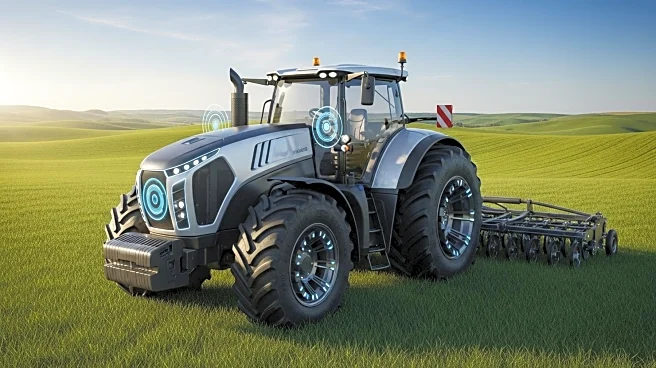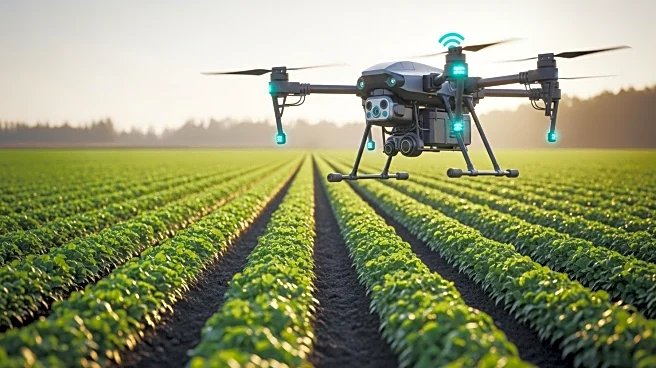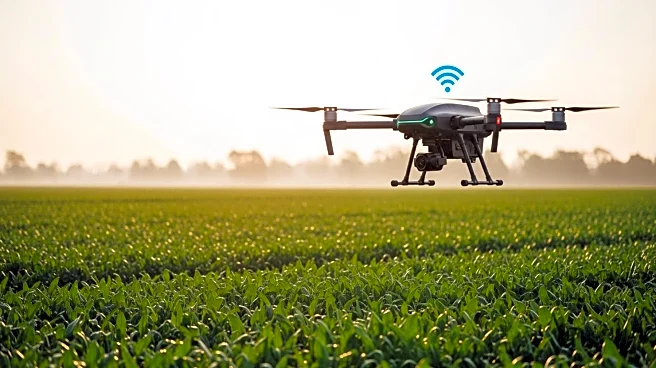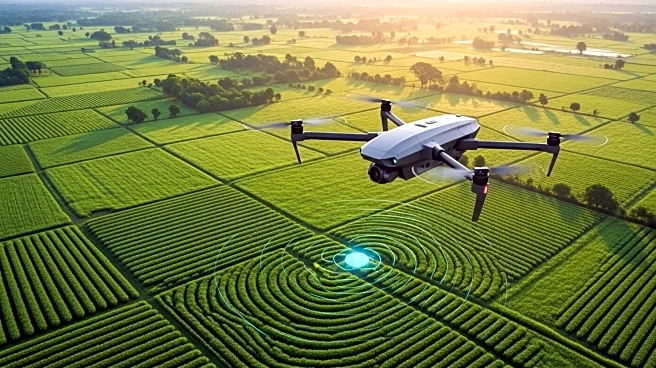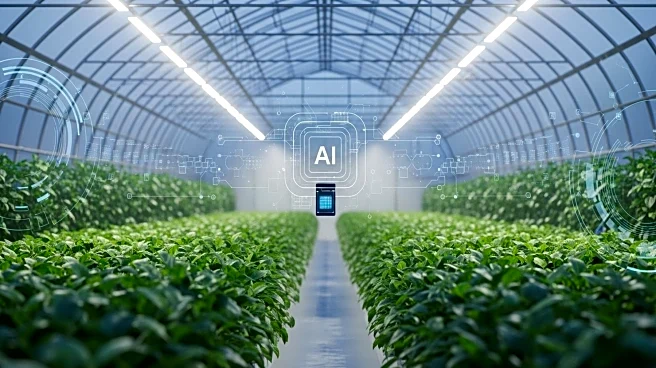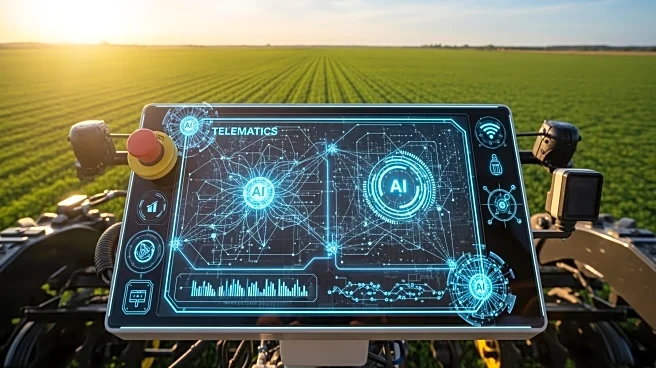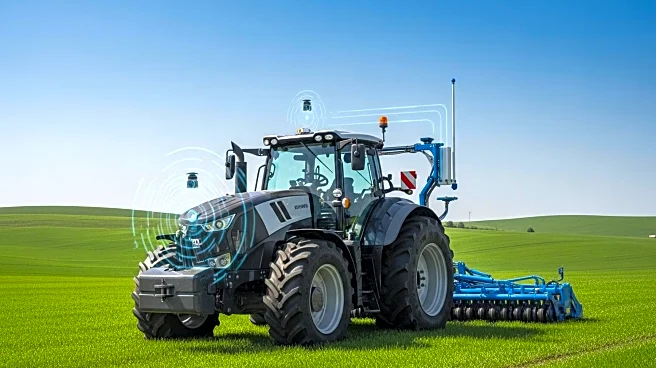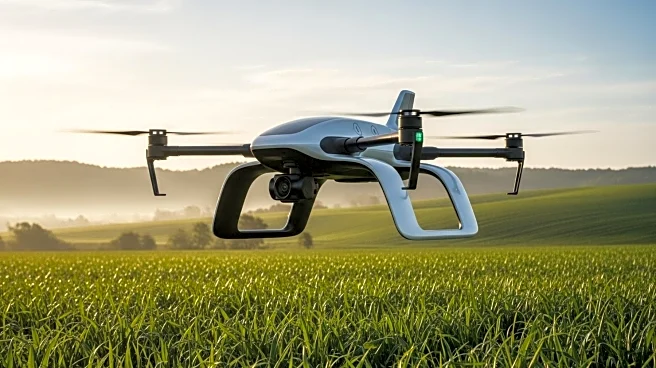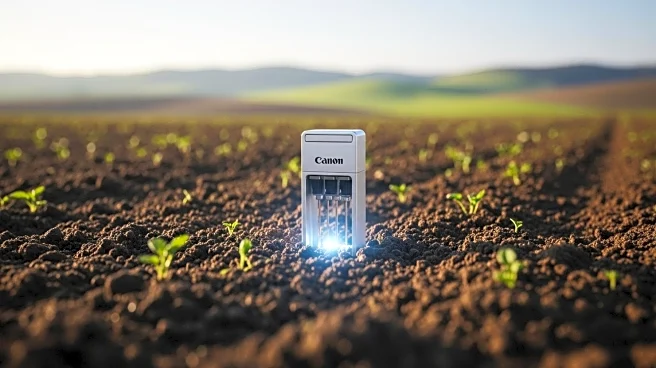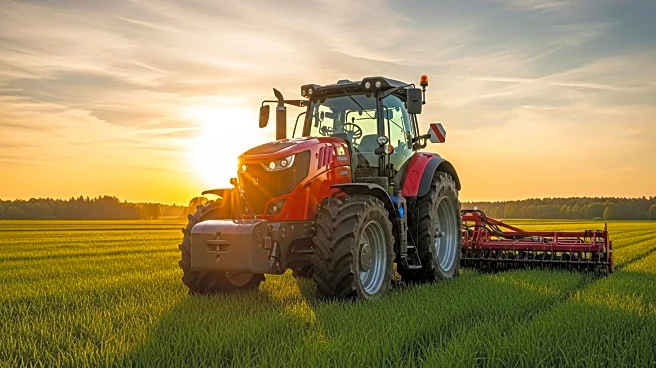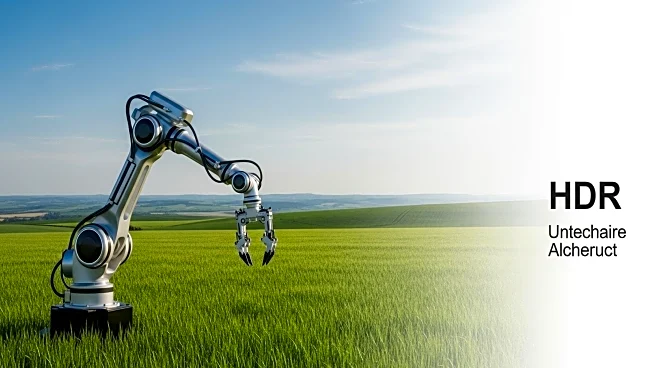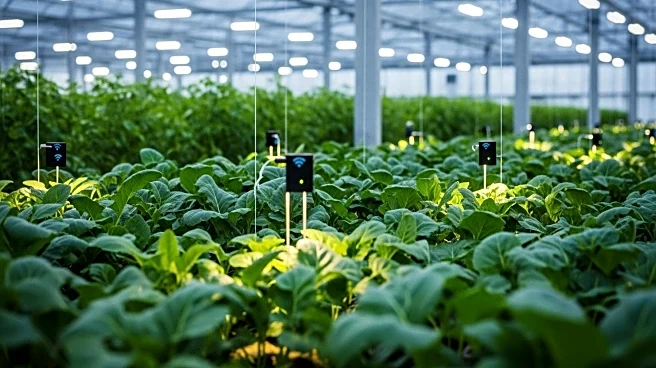What is the story about?
What's Happening?
The global agriculture equipment market is projected to grow significantly, reaching USD 281.46 billion by 2033. This growth is driven by increased mechanization and technological advancements in farming practices. The market, valued at USD 179.88 billion in 2024, is expected to expand at a compound annual growth rate (CAGR) of 5.1% from 2025 to 2033. Key factors contributing to this growth include the rising demand for food, efficiency pressures, and the adoption of smart farming technologies such as GPS-equipped tractors and precision harvesting tools. The Asia Pacific region currently dominates the market, accounting for around 7% of the global share in 2024, with tractors holding the largest market share. The shift from manual to mechanized solutions is addressing labor shortages and boosting productivity in agricultural regions.
Why It's Important?
The expansion of the agriculture equipment market is crucial for meeting the growing global food demand and improving farming efficiency. As the population increases, there is pressure to produce more food with fewer resources, making advanced equipment essential for enhancing crop yields and reducing waste. The adoption of smart farming technologies facilitates real-time monitoring and predictive maintenance, optimizing resource usage and minimizing environmental impact. This growth also presents opportunities for manufacturers to innovate and expand their product portfolios, catering to both large farms and smallholder needs. Additionally, government support and subsidies are encouraging farmers to invest in modern equipment, further driving market growth.
What's Next?
The agriculture equipment market is expected to see continued growth, with significant interest in electric and smart machinery. Governments are likely to introduce more policies and incentives to support farmers in adopting modern technologies. Equipment rental and sharing models may become more prevalent, allowing farmers to access high-end machinery without incurring full purchase costs. Major players in the market, such as Deere & Company and Kubota Corporation, are focusing on developing efficient, low-cost machinery and expanding their offerings to meet diverse farming needs. The Asia Pacific region is anticipated to experience the strongest growth, supported by government initiatives and increasing credit availability.
Beyond the Headlines
The shift towards mechanization and smart farming technologies has broader implications for the agricultural sector. It may lead to a reduction in manual labor requirements, impacting employment in rural areas. However, it also presents opportunities for skill development and technical training, as operating advanced machinery requires specialized knowledge. The focus on sustainability and environmental goals is driving interest in electric tractors and smart harvesters, aligning with global efforts to reduce carbon emissions and promote eco-friendly practices. As technology continues to evolve, the integration of AI and IoT in agriculture could further transform farming operations, enhancing productivity and resource management.
AI Generated Content
Do you find this article useful?
